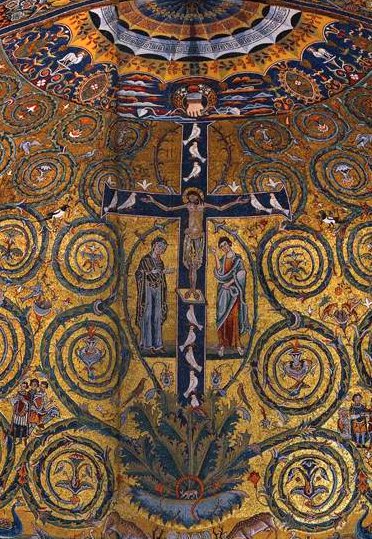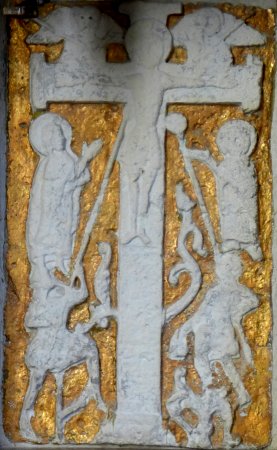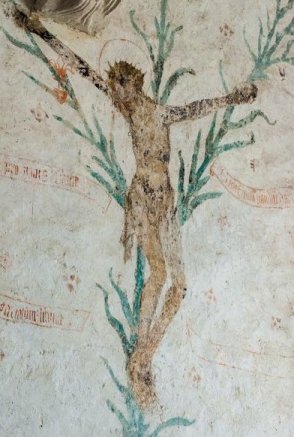|
The
Crucifixion |
|
|
I discussed this topic in some
detail when writing about the Legend of the true Cross here,
so for a change I will be brief. The idea was taken up by in some detail
by the 13th century Franciscan Theologian St Bonaventure in The Tree of
Life. In the legend, the cross of the Crucifixion is made from wood
grown from the seed of the Tree of Life from the Garden of Eden, as
described in Genesis: |
|
|
|
|
| It is not a
common image, and, curiously two fine examples are found in England. One,
on the left below, at Romsey Abbey in Hampshire, we have met when looking
at Christus triumphans images. The
Cross is bursting into bloom. The image on the right is a wall painting from All Saints Church, Godshill, on the Isle of Wight. This is the only example in England of the Lliy Cross. it shows Christ Crucified on a lily instead of a cross. It is another demonstration of the Crucifixion as the Tree of Life, but it is also linked to the idea that the Crucifixion happened on the 25th of March, the same day as the Annunciation, of which the lily is a symbol. |
|
|
|
|


